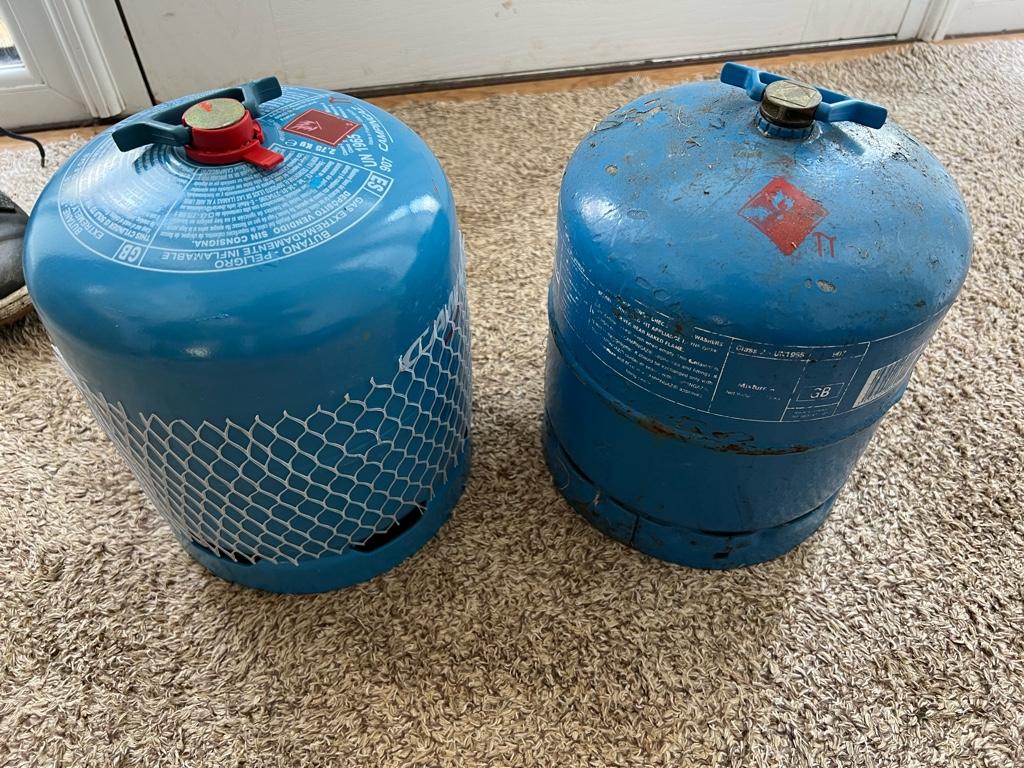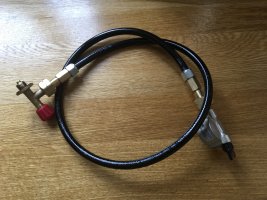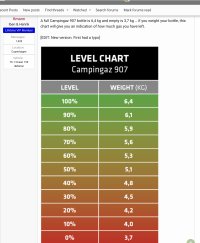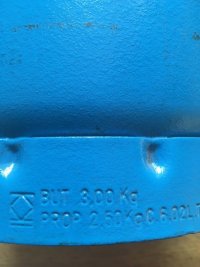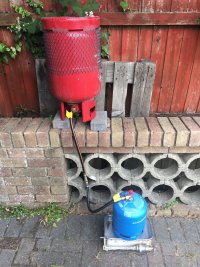This may be controversial ?
please don’t post Health and safety warnings etc.
I am confident I’m my ability to assemble and leak test gas fitting.
This SHOULD NOT be attempted IF YOU ARE NOT ENTIRELY CONFIDENT IN YOUR ABILITY.
I purchased a set of fitting and hose for transfer filling from a donor Calor Butane 15kg to camping Gaz 907 bottle. see photo below ( component parts need to be assembled and can be bought from gas spares suppliers on line. (Choose quality brass parts only) sets can be bought online comprising all the parts you will need ( suggest a NRV is included for added safety)
I assembled the components and joined them to the hose using correct size spanner’s (ensure a Non return valve fitted to the assembly)
I filled two partially empty camping Gaz cylinders from a larger 15kg blue Butane bottle. Large 15kg Calor gas butane ( current cost £52 / 15kg)
local Hardware shop refill (exchange) camping Gaz 907 bottle £37 each
here is what I did (I AM NOT SUGGESTING OTHER SHOULD DO THIS I am am merely sharing what I did )
Warning : DO NOT DO THIS INSIDE or in an enclosed environment, because of the potential for gas leaks !
Ensure it is done outside.
Important: I did this in the morning with two cold (ambient) gas canisters Calor & 907 (having been stored in a garage).
establish the existing weight of the 907 cylinder.
refer to the chart posted by Kmann (photo below ) for weight / percentage fill level.
link here
Just made this. Print it (or take a picture with your cell phone) and use it together with a luggage weight :) A full Campingaz 907 bottle is 6,4 kg and empty is 3,7 kg … if you weight your bottle, this chart will give you an indication of how much gas you have left. [EDIT: New version. First...

vwcaliforniaclub.com
1) weigh the 907 bottle to give a base reading by weight. (I did this with bathroom scales, me standing on them, first without the bottle, secondly holding the bottle, I then subtracted my weight (chubby) to determine the existing level of gas in the bottle and establish how much gas I would need to transfer: to achieve the target weight ( keep the scales close to hand during the filling process)
1a) leak test both the 907 & Calor gas bottle valve to ensure they do not leak from the factory valve (ensure both cylinder valves are clean and dirt free.
2) ENSURE : 907 adaptor switch off fully.
3) connected the set to the calor bottle with the small regulator.
4) Switch on the small calor regulator ( noting : other end 907 still not connected to the 907 bottle and is switch fully OFF
5) Important: carry out a soap gas leak test to ensure all joints ARE gas tight THROUGHT the assembly.
6) When confident there are no leaks, screw the 907 tap onto the 907 bottle.
7) invert the calor bottle and lift it up above the 907 bottle (I used a my wooden garden bench as a platform,
907 bottle standing upright on the floor, so the Calor bottle regulator faces the floor (elevated in the bench) and the 907 tap in vertical.
8) open the 907 adaptor tap partially ( filling begins, you can hear the liquid entering three 907 bottle)
9) IMPORTANT: immediately Re check with leak test to ensure 100% there are no leaks ( switch off both bottles if leak detected & rectify )
9a ) if no leaks open the 907 tap fully.
10) IMPORTANT: during filling regularly weight the cylinder (myself together with the bottle) on the scales to ensure the 907 bottle is not over filled. (Combined weight )
when the desired fill % level is achieved: immediately switch off the 907 tap.
11) IMPORTANT: under no circumstances: DO NOT exceed 6kg overall weight for the 907 cylinder,
there is a safety margin to this weight, theweight of the 907 tap adaptor attached to the bottle whilst filling Increases the overall weight ogpf the 907 tank.
if you exceed 6kg weight of the 907 cylinder you risk overfilling, which will cause gas to escape / vent from the 907 valve When you disconnect the 907 bottle.
12) Switch off the Calor regulator.
13) before disconnecting the Calor gas regulator, recheck the 907 tap is switched off Fully
14) disconnect the Calor regulator from the Calor bottle. (you will hear a small hiss as the residual gas escapes & is normal when disconnecting a gas bottle.
15) disconnect the 907 tap.
16) check the 907 bottle valve for leaks (soap test)
note: if a leak is detected (shouldn’t if you don’t overfill) carefully attach a 907 regulator to the bottle and vent a small amount of gas. (disconnect and recheck as necessary until no leaks are detected)
using the 15kg butane as the doner at a cost of £52 equates to £3.46 per kilo x 2.7 kilo capacity of the 907 = £9.36 per 907 fill vs £37 from an exchange from a dealer.
a saving of £27.64 per fill. (The cost of the parts pay for themself with the first fill).
